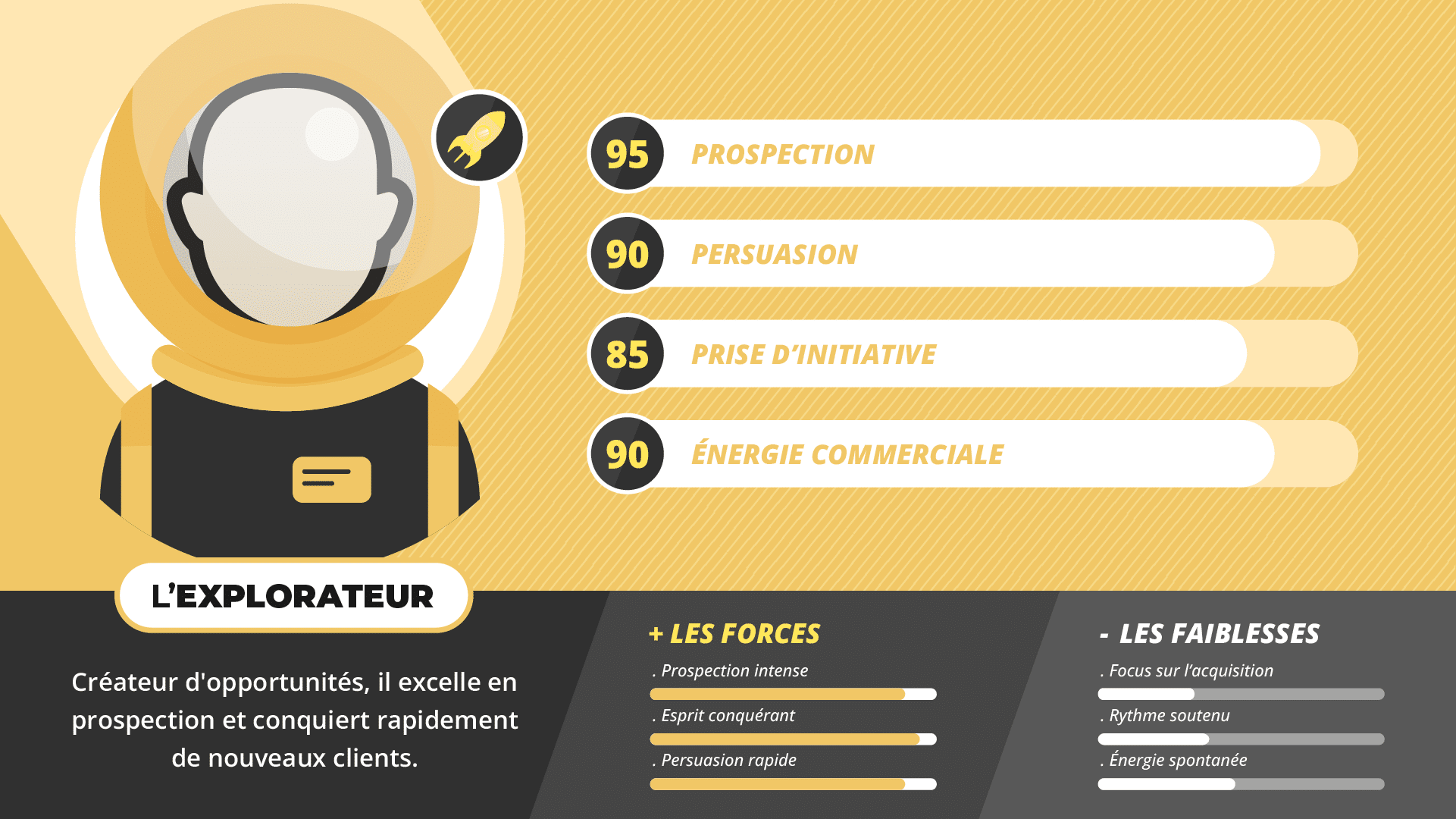Your goal is simple: a customer who experiences a pleasant Experience that sets you apart from your competitors is likely to become a loyal customer, or even an ambassador for your brand. Customer Journey, as the path taken by all players, Customer Experience, your brand's distinctive travel experience.
How do you achieve this goal? To answer this question, let's compare the different types of Experience you can define and deliver to your customers, and their impact on the way your customers feel.
The Ultimate Customer Experience
To begin with, let's take a look at a simplified model (inspired by the one we propose as part of our exclusive CX Dynamics© method) of an a priori "ideal" customer journey.
Your entire customer journey is located in the enchantment zone. You really take care of them, and never cease to surprise them at every point of interaction.
Ah! the sweet dream of every Customer Experience manager...!
Unfortunately, this Experience is very difficult to maintain over the long term: on your company's side,the efforts deployed to achieve this level of service are likely to generate costs that will potentially erode your margin. On the customer's side, this could have a perverse effect: they will quickly become convinced that they are paying for this level of service, and that the Experience offered is not exceptional, but normal from this point of view! As a result, his perception will gradually fall into the "neutral" zone as your interactions progress.
So, if this sales strategy isn't the Holy Grail, what Customer Experience should we aim for?
Before going any further, it is necessary to make an aside on the difference between Lived Experience and Memorized Experience. To illustrate this point, it's worth taking a look at a 1996 psychological study which examined the perception of pain (rated from 0 to 10) by different patients.
Here is an extract from the study:
Pain levels as described by 2 patients during surgery.
Any normally constituted being would prefer to experience what Patient A went through rather than what Patient B went through: a procedure that generates the same pain (peak to 8), but lasts much less time...
Except that when patients were asked to say after the procedure what their average pain level was, it had nothing to do with an average of the various peaks.
Instead, the average described by each patient was that of the highest peak and the last moment of the operation.
So, even though Patient B's operation was longer, and therefore certainly less pleasant, than Patient A's, Patient B has less "violent" memories of the procedure (although we wouldn't go so far as to say more pleasant...).
This phenomenon, highlighted by Nobel Prize winner Daniel Kahneman, is known as the "pic-end rule": the memorization of an experience by individuals is linked to the strongest moment of that experience and the end of it. This aside sheds new light on what the Customer Experience must be to make it the best remembered (and therefore the one that will lead the customer to be loyal to you and become your ambassador).
Discover the KESTIO webinars, where we discuss
all topics related to sales performance with our experts:
Fabien Comtet, CEO
Dominique Seguin, General Manager
Nicolas Boissard, Marketing Director
The dangers of Neutral Experience
In the light of this study, one might think that a "neutral" experience would suffice to ensure a good level of customer loyalty. However, as we shall see, this is not the case, for a number of reasons.
The neutral Customer Experience is often what most customers experience. It doesn't build loyalty, and at the first opportunity presented by the competition, they'll gladly take their business elsewhere.
What's more, if there's an obstacle along the way, they'll retain a vivid image of it, and you're likely to have lost them for good.
Target important moments to delight the customer
As you can see, it's particularly important to ensure 1 (or even 2 or 3) key moments along the way when you're going to enchant your customers.
On the one hand, to differentiate you from your competitors, and on the other, to prevent the slightest problem from causing you to lose your customers for good.
In this example, the customer is likely to overlook a fairly disastrous purchasing experience and congratulate himself on having bought this product, which brings him satisfaction every day.
The importance of after-sales service
The "peak-end rule" theory also explains why it's so important to have a high-performance after-sales service. It's potentially the last step in their customer journey, and will have a major impact on their perception of the overall quality of the Customer Experience you've provided.
In fact, when we run workshops on this topic and ask people in the room to give us real-life examples of positive Customer Experience, 80% of customers tell an anecdote about a problem that was brilliantly (or even surprisingly) solved by after-sales service.
And do you know why?
Because it always makes a good story to tell.
Customer Experience Storytelling
All the stories we've been used to seeing and hearing since we were little include a hero who starts from a rather flat initial situation (neutral), goes through a moment of great difficulty (disenchantment) but ends with a happy ending (a moment of enchantment).
The story is often even more successful if a mini moment of enchantment precedes the great disenchantment.
To ensure that your customers remember the Experience you've given them, and that they tell their friends and family about it, it's a good idea to design your journey according to this scenario.
Of course, we're not talking about creating moments of disenchantment along the way, but about identifying the main stages at which a disappointing Experience can occur, so as to counter it as quickly and effectively as possible, so that your customers have a nice story to tell. : )
Did you know that 95% of your success is linked to your state of mind? To learn how to manage your emotional charge more effectively, discover the Triad method in this webinar:
This article uses (in a simplified version) the model derived from KESTIO's exclusive CX Dynamics© methodology to measure the quality of the Customer Experience throughout the customer journey.
It was inspired by an Smashing Magazine article.






